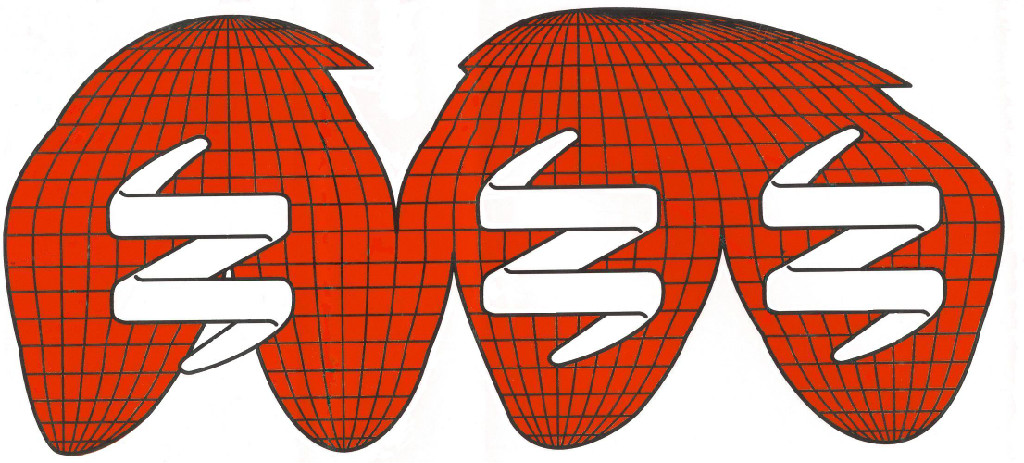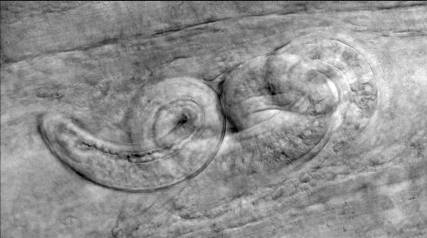Species and Genotypes

International Commission on Trichinellosis
Species and Genotypes of Trichinella
Trichinella spiralis (also called T-1) is distributed in temperate regions worldwide and is most commonly associated with a domestic pig cycle. It is the primary species found in pigs, wild boar, horses and synanthropic rats, but may also be found in wildlife, especially in the vicinity of pig farms where transmission is ongoing. This species is highly infective for pigs, mice and rats.
Trichinella nativa (T-2) is a cold climate adapted species. It has very limited infectivity for pigs, being found most commonly in wild canids, bear, and walrus. It is further distinguished by its resistance to freezing. Trichinella nativa causes human disease in arctic and subarctic regions.
Trichinella britovi (T-3) is found predominantly in wild animals, although it may occasionally be found in pigs or horses. It is widespread in temperate regions of Europe and Asia and has been associated with human disease resulting from the ingestion of undercooked game meats.
Trichinella murrelli (T-5) has been reported in wild animals from the United States and parts of Canada. It has not been reported in domestic pigs, but has been reported from a horse; human infections have resulted from the ingestion of undercooked game meats.
Trichinella nelsoni (T-7) has been isolated sporadically from wildlife in Africa. It is characterized by greater resistance to elevated temperatures (2-3˚ C higher) as compared with other species of Trichinella.
Three genotypes of encapsulating Trichinella, designated T-6 and T-8 and T-9 have also been described:
Trichinella spiralis (also called T-1) is distributed in temperate regions worldwide and is most commonly associated with a domestic pig cycle. It is the primary species found in pigs, wild boar, horses and synanthropic rats, but may also be found in wildlife, especially in the vicinity of pig farms where transmission is ongoing. This species is highly infective for pigs, mice and rats.
Trichinella nativa (T-2) is a cold climate adapted species. It has very limited infectivity for pigs, being found most commonly in wild canids, bear, and walrus. It is further distinguished by its resistance to freezing. Trichinella nativa causes human disease in arctic and subarctic regions.
Trichinella britovi (T-3) is found predominantly in wild animals, although it may occasionally be found in pigs or horses. It is widespread in temperate regions of Europe and Asia and has been associated with human disease resulting from the ingestion of undercooked game meats.
Trichinella murrelli (T-5) has been reported in wild animals from the United States and parts of Canada. It has not been reported in domestic pigs, but has been reported from a horse; human infections have resulted from the ingestion of undercooked game meats.
Trichinella nelsoni (T-7) has been isolated sporadically from wildlife in Africa. It is characterized by greater resistance to elevated temperatures (2-3˚ C higher) as compared with other species of Trichinella.
Three genotypes of encapsulating Trichinella, designated T-6 and T-8 and T-9 have also been described:
- T-6 is found in carnivores in North America and parts of Canada. It is similar to T. nativa in its resistance to freezing in animal tissues, but does not extend as far north in its range. It is distinguished from T. nativa by both biochemical and molecular characters.
- Trichinella T-8 has only been reported in Africa. It is similar to T. britovi, but again, may be distinguished by both biochemical and molecular characters.
- Trichinella T-9 occurs in Japanese wildlife and may be differentiated from T. britovi by molecular methods. No human cases have been attributed to infection with Trichinella T-8 or T-9.

Three species of Trichinella do not form capsules in the host. These are T. pseudospiralis, T. papuae and T. zimbabwensis:
- T. pseudospiralis has been recovered from raptorial birds, wild carnivores including wild boar, rats and marsupials in Europe, Asia, North America and the Australian subcontinent. Several human outbreaks due to T. pseudospiralis have been reported.
- T. papuae has been found in domestic and wild pigs as well as saltwater crocodiles (fed pig meat) in Papua New Guinea. Due to its ability to infect reptiles, it is the suspected agent of human trichinellosis resulting from the ingestion of turtle and lizard meat.
- T. zimbabwensis is similar to T. papuae in its ability to infect reptiles and wild carnivores. It has been reported in several parts of Africa but has not been implicated in human disease.
Further reading
Pozio, E. and Murrell, K. Darwin. 2006. Systematics and epidemiology of Trichinella. Advances in Parasitology, 63:367-439.
Pozio E. and Zarlenga D.S. 2005, Recent advances on the taxonomy, systematics and epidemiology of Trichinella. International Journal of Parasitology, 35:1191-1204.
International Trichinella Reference Center - http://www.iss.it/site/Trichinella/index.asp
Pozio, E. and Murrell, K. Darwin. 2006. Systematics and epidemiology of Trichinella. Advances in Parasitology, 63:367-439.
Pozio E. and Zarlenga D.S. 2005, Recent advances on the taxonomy, systematics and epidemiology of Trichinella. International Journal of Parasitology, 35:1191-1204.
International Trichinella Reference Center - http://www.iss.it/site/Trichinella/index.asp
